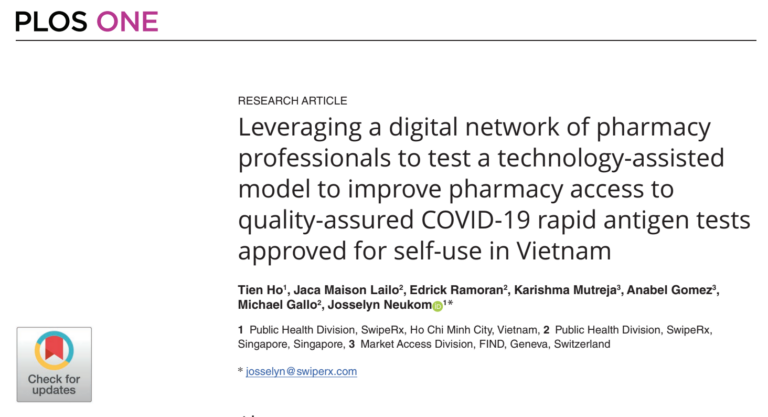Pharmacies are the first point of access to modern medical advice and treatment for most people in Southeast Asia, especially the poor and rural. Patients may not go to a hospital or clinic at all unless treatment at the pharmacy fails first. Because most pharmacies in the region are private independently-owned shops not integrated into any national electronic health information system, little data exists on potential and active TB patients seeking treatment at pharmacies leading to missed tuberculosis cases.
It’s clear that TB isn’t going anywhere unless pharmacists get involved.
Pharmacists should be empowered to screen, refer, and notify TB cases.
In their decision to end TB by 2030, the health ministers of the WHO Southeast Asia region highlighted the importance of active case detection. Active case detection means that health workers systematically screen the population to find cases of TB, and reach out to the community and public health officials when they find cases. This helps to reduce disease transmission because it allows for earlier diagnosis and treatment, thereby improving patient outcomes and shortening the infectious period.
There are few countries in which the small, private sector pharmacies that patients most frequent have any sort of formal mechanism to refer patients to proper diagnostic and treatment facilities. Until such mechanism exists, many patients will remain “missing” – a risk to both their health and their communities’ health.
Pharmacists can monitor TB treatment and educate their patients about TB
The treatment for TB recommended by WHO involves a combination therapy of 2-4 drugs administered over a period of 6 months. However, mClinica’s 2016 data revealed that in the Philippines and Indonesia, the percentage of transactions consisting of single drug or wrong combination of drugs for TB treatment is 35% and 47% respectively. Mistreating TB with the wrong combination of drugs fuels the rise of multi-drug resistant tuberculosis (MDR-TB), which poses an even greater threat to public health.
Clearly, it is crucial for health professionals to educate the public on the proper course of treatment for TB. Pharmacists are ideally positioned within their communities to provide direction and to inform their patients about TB and appropriate treatment options. With the use of mClinica’s Connect, a digital patient platform for pharmacists, patients will receive educational messages about the drugs they are taking as well as messages that promote drug adherence. Patients whose pharmacists use the Connect platform will also receive text message reminders to refill their prescription, which is very useful for a disease like TB that requires multiple medications over a long period of time.
In conclusion, there are a number of ways that pharmacists can play a role in ending TB. Pharmacists must be included in the screening, referral, and notification of TB cases. Additionally, by using digital patient platforms like Connect, pharmacists can also be responsible for educating the public about TB and for overseeing proper treatment.
It’s time to mobilize pharmacists in the fight against TB.
You might be interested in:
Generic Medicine: The State of Play across Southeast Asia
Want to reduce childhood illness? Let pharmacists give vaccines.
In Southeast Asia, patients aren’t finishing their TB medications. Why?







